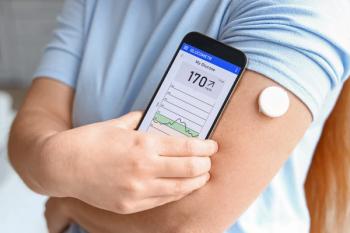
Cardiovascular Screening Rates Declined in Adults With Disabilities During COVID-19 Pandemic
Key Takeaways
- The COVID-19 pandemic worsened health care access disparities for adults with disabilities, leading to reduced cardiovascular screening rates and unmet medical needs.
- Screening rates for cardiovascular risk factors declined across most disability types, with notable decreases in blood pressure and blood glucose screenings.
Individuals with cognitive and physical disabilities faced difficulties in health care utilization and had reduced rates of preventive cardiovascular screenings during the pandemic.
Results from a repeated cross-sectional analysis published by University of Delaware and George Mason University investigators in the American Journal of Preventive Medicine demonstrate significant disparities in health care resource utilization and preventive cardiovascular screening among adults with disabilities during the COVID-19 pandemic, with many experiencing longer delays in medical care and declines in screening rates. These results indicate major discrepancies in heart screening uptake and an urgent need to ameliorate these gaps to improve cardiovascular prevention.1,2
Individuals With Disabilities Face Increased Barriers to Preventive Care
The study authors, who examined medical data from over 150,000 US adults between 2019 and 2023, aimed to determine the full extent of the COVID-19 pandemic’s exacerbations on the health care system, specifically among individuals with disabilities. These patients often must navigate barriers to accessing quality health care, such as communication difficulties or physical inaccessibility. Because of such barriers, adults with disabilities experience higher rates of chronic conditions—including cardiovascular disease—and more frequent rates of hospitalization, along with weakened health statuses.3-5
These aspects of the lives of individuals with disabilities can be heightened in their disruptive potential due to public health crises, such as the COVID-19 pandemic. With society widely impacted due to stay-at-home orders, business closures, and other public health restrictions, individuals with disabilities experienced reinforced and novel barriers as they encountered difficulties in accessing treatment and diagnostic services.1,2
Numerous research initiatives have investigated the pandemic’s impact on health care utilization for individuals with disabilities, but many lack disability-specific insights, which limits the ability to understand how particular disability types were affected. Accordingly, the present authors sought to address these existing gaps by using data from the National Health Interview Survey (NHIS) to examine the impact of the COVID-19 pandemic on preventive cardiovascular care.1,2
Survey Analysis Reveals Reduced Cardiovascular Screening For Adults With Disabilities
NHIS was a nationally representative, cross-sectional survey administered by the National Center for Health Statistics. The survey collects clinical and sociodemographic comorbidity data and features disability-related questions that patients can respond to. The authors focused on 6 sectors of questions, categorizing respondents into 5 groups: sensory disability, cognitive disability, physical disability, multiple disabilities, and no disability. Preventive health screening measures were defined as the proportion of adults who underwent blood pressure, blood glucose, or cholesterol screenings in the past year.1,2
After the COVID-19 pandemic, screening rates for cardiovascular risk factors declined across all disability types, except for sensory disability. Significantly, there was a decline in blood pressure screening for adults with cognitive disabilities and a decline in blood glucose screening for individuals with multiple disabilities, according to the investigators.1,2
Adjusted rate ratios (ARRs) for cardiovascular risk factor screenings were stratified by disability status, with comparisons between pandemic phases. For blood pressure screenings, ARRs were 5% lower in 2021 and 2% lower in 2023, on average, among individuals without a disability. Regarding cholesterol screening, rates decreased across all disability types during 2021, although screening increased by 7% in 2023 among adults with sensory disabilities. Furthermore, blood glucose screening rates decreased by 8% in adults with cognitive disabilities during 2021 but improved in 2023 to reach prepandemic levels.1,2
Health care utilization measures were also compared between before the pandemic and during years 1 and 2 of the pandemic. There were demonstrable increases in the rates of attending a wellness visit among individuals with multiple disabilities, whereas individuals with cognitive and physical disabilities faced higher rates of unmet medical needs due to cost than those without disabilities. Notably, these disparities were sustained even following adjustments for socioeconomic fluctuations related to the pandemic.1,2
Insights for Health Care Professionals
This data provides critical insights for pharmacists and primary care providers: A major gap exists in preventive cardiovascular screening efforts among US adults with disabilities. Pharmacists play a key role in helping to bridge these gaps for this population, who often require increased counseling and preventive efforts to reduce their risk of developing cardiovascular disease or other chronic conditions.1,2
“The findings underscore long-standing structural barriers in the health care system, including inaccessible facilities, limited provider training, communication challenges, and uneven access to telehealth and transportation services,” a news release from the University of Delaware accompanying the study results read. “Although the pandemic disrupted care for many, the study suggests it exacerbated preexisting inequities for people with disabilities.”2
REFERENCES
1. Pena A, Bauman P, Free P, et al. Healthcare Utilization and Preventive Cardiovascular Health Screening Among Adults With Disabilities Amid COVID-19 Phases. Amer Journ Prevent Med. 2025;69(2):107648. doi:10.1016/j.amepre.2025.107648
2. University of Delaware. Preventive heart screenings plunged for disabled adults in pandemic years. EurekAlert! News Release. Released July 2, 2025. Accessed August 19, 2025. https://www.eurekalert.org/news-releases/1089786
3. Iezzoni LI. Eliminating Health And Health Care Disparities Among The Growing Population Of People With Disabilities. Health Affairs. 2011;30(10). doi:10.1377/hlthaff.2011.0613
4. Krahn GL, Walker DK, Correa-De-Araujo R, et al. Persons With Disabilities as an Unrecognized Health Disparity Population. AJPH. 2015. Accessed August 19, 2025. https://ajph.aphapublications.org/doi/full/10.2105/AJPH.2014.302182
5. Son KY, Kim SH, Sunwoo S, et al. Association between disability and cardiovascular event and mortality: A nationwide representative longitudinal study in Korea. PLOS One. 2020:15(7):e0236665. doi:10.1371/journal.pone.0236665
Newsletter
Stay informed on drug updates, treatment guidelines, and pharmacy practice trends—subscribe to Pharmacy Times for weekly clinical insights.





















































































































































































































